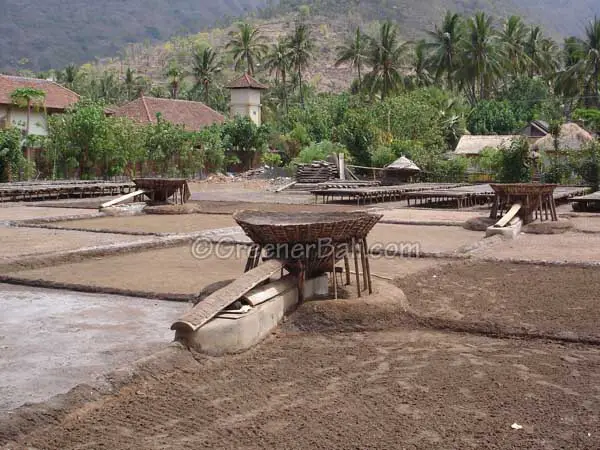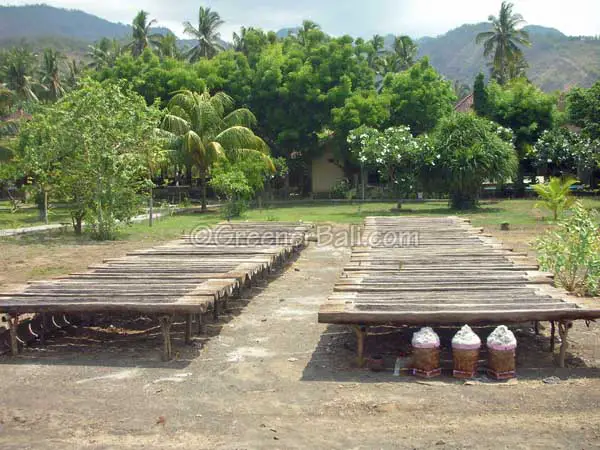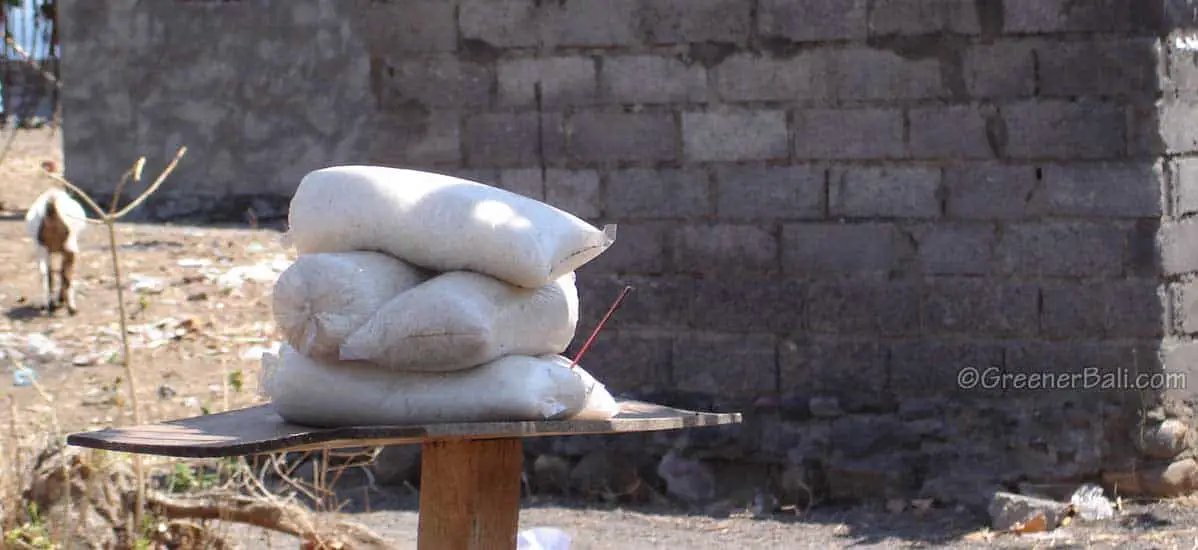Traditional salt from Bali is mainly made in Amed. In this part of the island life is hard compared to other areas of the island. Here the local people are poor and the landscape is dry and arid. So instead of tending lush green rice fields the people of Amed plant corn, tobacco, peanuts, cassava, and beans.
Fishing is also important. This is evident with the string of traditional fishing boats along the coast of Amed.

Another source of income is traditional salt winning.
When driving through Amed you will see little plastic bags filled with salt for sale. It’s a great souvenir to take home. Once you realize how much work is needed for a pinch of salt you will appreciate this basic ingredient even more…
How is the salt from Bali made?
First, a large quantity of seawater is carried from the ocean and poured in a 5 by 5-meter squared area to dry. Saltwater is added to increase the salt concentration. After three days, the mixture of soil and salt is poured into a cone-shaped basin made from bamboo. Just like with grapes for wine, the salt farmer walks around in the basin and compresses the salt with his/her feet.

The water is leaked out of the basin and collected so it can be dried again by the sun in wooden drying pans. Once all the water is evaporated the salt is gathered. Only then is it ready for sale. In a good week, salt farmers can collect 70 to 100 kg of salt worth Rp. 100.000 (USD 10).
As you can imagine carrying hundreds of liters of water on your bare shoulders every day is hard work. The income is also low compared to working in a hotel. Salt winning is therefore not at all popular among the younger generation.

Luckily restaurants such as those in Seminyak are acknowledging the quality of the salt from Amed. Hopefully, it will become more popular and the income of salt farmers will increase.
At Cafe Garam visitors can learn and see the process of salt making. Baskets made from local materials filled with salt are for sale. The income generated is shared among the salt farmers.

